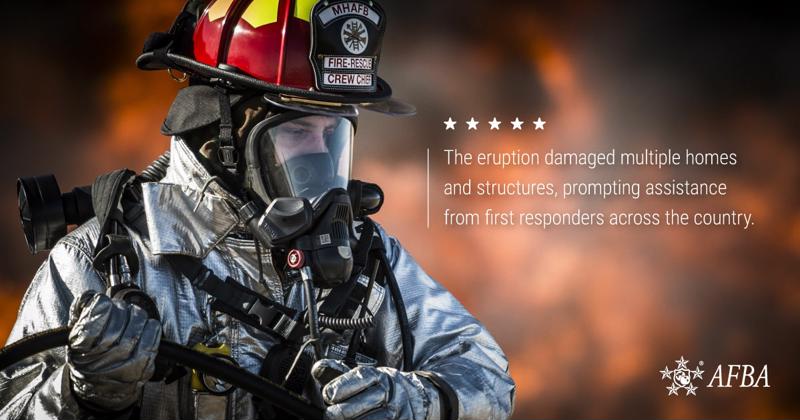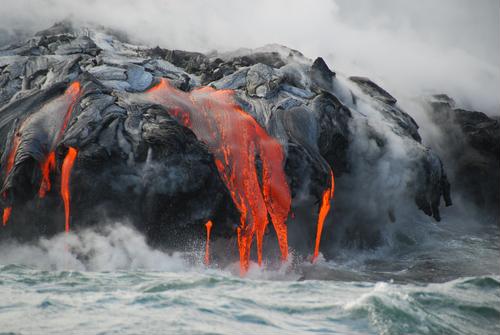On May 3, 2018, a volcanic event known as the 2018 lower Puna eruption occurred on Kilauea volcano's East Rift Zone on Hawaii's Big Island. Earthquakes caused cracks in the roads, leading to lava foundations up to 300 feet high and destroyed homes in the Leilani Estates subdivision. Nearly 2000 residents were forced to evacuate, and the Puna Geothermal Venture, which provides electricity for a significant part of the island, was forced to shut down and later damaged. This event is part of the larger, long-term Kilauea eruption that began Jan. 3, 1983.
As part of the efforts to minimize the volcano's damage and destruction, first responders from around the nation made their way to Hawaii. A CBS News affiliate from Greensboro, North Carolina, covered a story about a group of local first responders leaving for the island at the end of May. Ten of the state's fire service officials and emergency managers made their way to an emergency operations center in Hilo, Hawaii. There, they assisted an incident management team and the Hawaii County Civil Defense agency for 14 days before returning home.

Another group of responders came from Oregon and southwest Washington, per an NBC News affiliate. They're assisting local authorities by erecting disaster relief shelters and providing food, water and mental health services. One, a former Southern California firefighter and current Red Cross volunteer, noted how the unpredictability of the volcano makes operations difficult.
"It's slow and it's unpredictable," said volunteer Jerry Hall to the news station. "Tornadoes and hurricanes…you pretty much know what to expect as it happens. This is ongoing and the lava is changing directions all the time and changing areas. So, it's a lot of uncertainty for the people who live here."
Hall's statements were echoed by Cowlitz 2 Battalion Chief Joe Tone of Washington state.
"A few days in, I realized the severity as far as danger to myself and the other guys because (the lava) is so unpredictable," Tone said to The Daily News Online.
He went on to explain how, even though the fissures are all erupting on a single line, it's difficult to predict exactly where the next one will occur. But aside from trying to predict where the next event will happen, rescue workers must also assist the people who live in existing danger areas. Tone recalled seeing 20 homes in a single neighborhood destroyed. Some were overcome by flowing lava, others fell into the opening fissures and more caught fire from flying sparks.
Unfortunately, the lava isn't the only hazard of the ongoing eruptions. Thousands of people's lives were jeopardized by the toxic gases released by the volcano. So, in addition to physically rescuing trapped civilians, setting up shelters and transporting people to safety, first responders such as Tone also needed to monitor the island's air quality and chart where the gasses might spread next. Given the volcano's unpredictability and the natural movements of wind, this couldn't have been an easy task.
Tone and other first responders also worked to remove hazardous chemicals from the nearby geothermal plant, preventing a possible explosion that had a potential blast radius of half a mile. Thanks to their efforts, such risk was eliminated.
The damage from Kilauea
According to Reuters, this volcanic eruption is the most destructive since that of Mount St. Helens in 1980, with over nine square miles of the Big Island covered in lava. Estimates on the number of destroyed homes range from 455 to 600; regardless of the actual number, it is the greatest quantity of homes destroyed by the volcano in such a short time.


